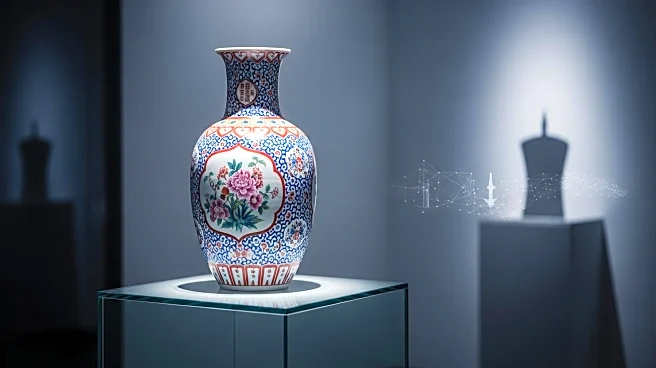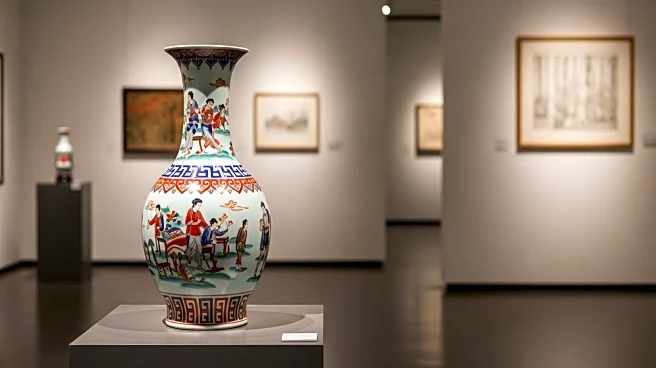What's Happening?
China is experiencing a significant transformation in its global image, moving from being known primarily as the world's factory to a creator of cultural and innovative products. This shift is exemplified by the global popularity of Pop Mart's Labubu collectible dolls, which reflect China's growing identity as a creator of cultural content. Chris Pereira, CEO of iMpact, highlights that China now exports innovations such as electric vehicles, smartphones, and consumer drones, marking a trend that is taking over various sectors. The rise of Chinese-origin intellectual properties, like the video game Black Myth: Wukong and the animated film Ne Zha 2, further underscores this shift. According to David Haigh of Brand Finance, China ranks fifth globally for its 'products and brands the world loves,' with the number of Chinese brands in the Brand Finance Global 500 increasing from 13 to 68 over 17 years.
Why It's Important?
The shift from 'Made in China' to 'Created in China' has significant implications for global markets and cultural dynamics. As China prioritizes creativity and innovation, it enhances its soft power and global influence. This transformation could lead to increased competition in sectors traditionally dominated by Western brands, impacting U.S. industries that rely on manufacturing and technology. The growing appeal of Chinese cultural products may also influence global consumer preferences, potentially reshaping market dynamics and brand strategies. Furthermore, China's emphasis on creativity could foster international collaborations and exchanges, affecting global cultural and economic landscapes.
What's Next?
China's pivot towards creativity and innovation is likely to continue, with potential challenges arising from geopolitical tensions and mixed global perceptions. As China opens its doors wider to international visitors, the narrative of 'cool China' may evolve, influenced by global political and economic shifts. The country's unilateral visa-free policies could facilitate cultural exchanges, allowing more people to experience and share China's story. However, the sustainability of this trend will depend on China's ability to navigate international relations and maintain its focus on innovation.
Beyond the Headlines
The rise of China's cultural exports highlights deeper implications for global cultural identity and soft power dynamics. As China becomes a significant player in cultural innovation, it challenges traditional Western dominance in cultural exports. This shift may lead to a reevaluation of cultural narratives and influence, with China potentially shaping global cultural trends. The emphasis on creativity also raises questions about intellectual property rights and cultural appropriation, as Chinese brands expand their global presence.












